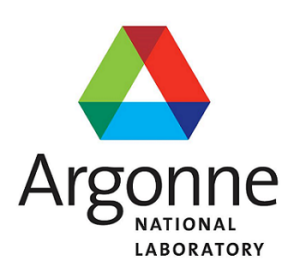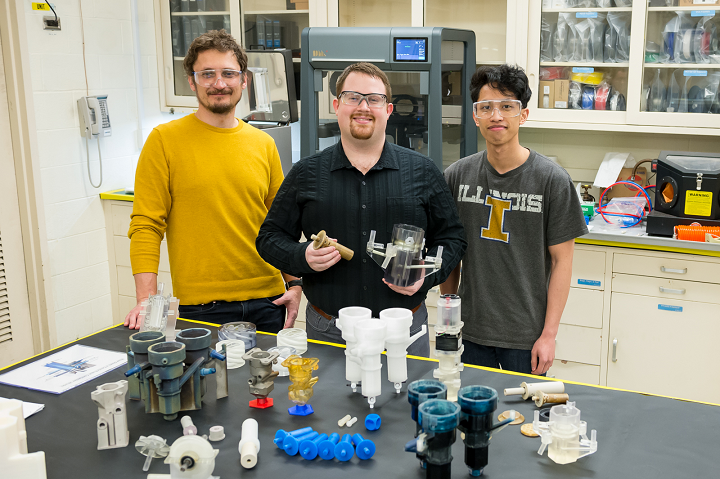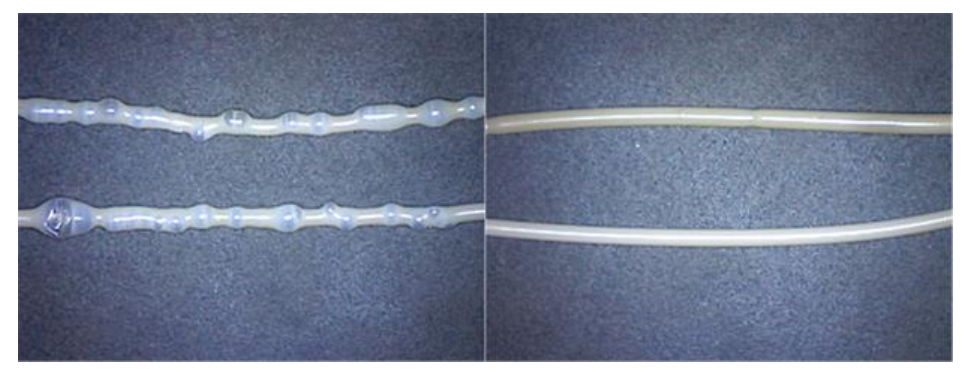Spanish researchers 3D print “the next generation” of enhanced eco-friendly fuel cells
Interview: Ascend Manufacturing CEO Justin Nussbaum details Large Area Projection Sintering
DoE Argonne scientists use 3D printing to recycle 97 percent of used nuclear fuel
Argonne National Laboratory: 3D Printing PEEK Counter-Current Centrifugal Contactor Components
Researchers from Argonne National Laboratory are analyzing materials for use in 3D printing, and have released results in the recently published ‘Additive Manufacturing Fabrication of PEEK Counter-Current Centrifugal Contactor Components.’ While the benefits of AM processes are discussed, there are still limitations for some types of production—despite the potential for greater affordability, customization, and on-demand manufacturing.
Regarding fabrication of annular centrifugal contactor-separator stages (CCS), the researchers experimented with high-density acrylic materials for better mechanical properties and stronger chemical resistance:
“Over the past two years, AM has been used to produce low-cost centrifugal contactor components, ranging from bench-scale laboratory testing to a full-scale industrial process with on-hand availability of spare parts and great flexibility in design modifications and quick testing and implementation,” stated the researchers.
SLA 3D printing has proved to be inferior for CCS previously, with components failing due to lack of strength in mechanical properties and deterioration of acrylic like flaking, delamination, and more. Notably, the SLA 3D printed parts could serve well as prototypes in research and development, but not for functional, commercial use.
During this study, the research team ran seven tests with three extraction, three scrub, and four strip stages. Rotors were scaled up by one centimeter, from 2 cm to 3 cm. Consequently, TCE evaporation increased, leading the team to monitor and adjust the density of the organic phase.
“It was discovered that during ~2 hr of running the 3-cm bank, the density of TBP solution changed from 1.432 g/mL to 1.419 g/mL,” noted the researchers. “This change corresponds to a loss of ~60 mL of TCE per liter of TBP/TCE, and a change in concentration of TBP from 30% to 32%. It is therefore important to feed TCE into the organic phase reservoir during longer runs.”
Due to slightly increased potassium in comparison to other runs used with AM 2-cm centrifugal contactors, the number of scrub stages were increased, solving the problem.
The PEEK materials were fabricated using FFF 3D printing. Due to intrinsic challenges with both PEEK and FFF 3D printing, the team relied on an Intamsys FunMat Pro HT, along with virgin PEEK material and PEEK/Carbon Fiber filament from 3DXTech—added to reduce warping issues. The team also took additional measures to deal with moisture, drying the filament for 12 hours.
“Hydrodynamic tests including leak-tightness and zero-point testing demonstrated comparable performance between PEEK printed and SLA-printed acrylic CCS stages of the improved design, and dramatically improved performance for PEEK printed stages when compared with the standard rotor design,” concluded the authors. “With the AM fabrication of PEEK contactor stages and the implementation of a gas purge to protect the motor, all components are now either chemically resistant to attack by HCl and TCE or are protected from potential splashing and vapors.”
“Future work will include carrying out additional holdup testing to better understand the composition of phases within the mixing section during typical operations. A 3-cm contactor housing will need to be printed from PEEK and integrated into an existing, traditionally fabricated 3-cm PEEK CCS bank. This integration will further prove the performance of PEEK printed contactor stages and will allow for longer-term reliability testing.”
Many different research projects have centered around PEEK, in labs around the world, from experimenting with recycling isotopes to fabricating disks with antibacterial qualities and optimizing car parts. What do you think of this news? Let us know your thoughts! Join the discussion of this and other 3D printing topics at 3DPrintBoard.com.
[Source / Images: ‘Additive Manufacturing Fabrication of PEEK Counter-Current Centrifugal Contactor Components’]
The post Argonne National Laboratory: 3D Printing PEEK Counter-Current Centrifugal Contactor Components appeared first on 3DPrint.com | The Voice of 3D Printing / Additive Manufacturing.
Argonne scientists scale up medical isotope recycling using 3D printing
Argonne National Laboratory Using 3D Printed PEEK Connectors to Recycle Molybdenum More Efficiently
Just a few years ago, the FDA approved the first Molybdenum-99 (Mo-99) to be produced domestically without the use of highly enriched uranium (HEU). This medical isotope helps radiologists detect bone decay, heart disease, and some types of cancers that are difficult to find, and in 2018, the US Department of Energy’s National Nuclear Security Administration (NNSA) reported that Mo-99 was used in over 40,000 medical procedures daily in the US – a number that has likely increased. So a team of scientists from the DOE’s Argonne National Laboratory turned to 3D printing to try and get more out of this important isotope.
“Every year, doctors rely on Molybdenum-99 to conduct millions of medical procedures to diagnose illnesses like heart disease or cancer. But producers of this medical isotope lacked an easy, cost-effective way to recycle it – until now,” Dave Bukey, the Integrated Communications Lead at Argonne, told 3DPrint.com.
Argonne, the nation’s first national laboratory, employs people from over 60 nations, and works to come up with solutions to important national problems in science and technology, often turning to 3D printing to solve them. The laboratory often works with researchers from other companies, universities, and agencies to help solve these problems, as well as advance the nation’s scientific leadership.
 Mo-99 decays into technetium-99m, which is then used by radiologists to develop pharmaceuticals for medical procedures. It can be made from enriched molybdenum, but it’s definitely not cheap, costing roughly $1,000 per gram. But now, it’s possible to scale up recycling of isotopically enriched molybdenum, Mo-98 or 100, for the first time in the US, thanks to Argonne’s recycling method and some 3D printed parts.
Mo-99 decays into technetium-99m, which is then used by radiologists to develop pharmaceuticals for medical procedures. It can be made from enriched molybdenum, but it’s definitely not cheap, costing roughly $1,000 per gram. But now, it’s possible to scale up recycling of isotopically enriched molybdenum, Mo-98 or 100, for the first time in the US, thanks to Argonne’s recycling method and some 3D printed parts.
This method was first pioneered back in 2015 by the laboratory’s Mo-99 program manager, Peter Tkac, and his team, and is faster, more reliable, and cost-effective.
Tkac said, “Our original method would have been very difficult to automate.”
The team’s original recycling process for enriched molybdenum was, as Bukey aptly described in an Argonne post, “tedious.” Along with other corrosive chemicals, used enriched molybdenum was converted into an acidic solution, then purified with test tubes and funnels in a lengthy, multi-step process.
In 2016, Tkac and other researchers turned their attention to automating the process, together with aerospace engineer, 3D printing expert, and fellow Argonne employee Peter Kozak. Instead of relying on the funnels and test tubes, they instead used 3D printed acrylic contactors, which use centrifugal force (acts outward on a body moving around a center) to spin and separate the chemicals.
“We printed each contactor as one piece with streamlined features and fewer external connections. This allows us to push the liquid through the system as quickly and reliably as possible,” Kozak explained.
These 3D printed contactors made the recycling of enriched molybdenum more efficient and less expensive, according to the research team, which includes Alex Brown and Brian Saboriendo. An article published in the Journal of Solvent Extraction and Ion Exchange in December explained that this updated recycling process was better able to separate enriched molybdenum from potassium and other contaminants.

The laboratory’s new 3D printing approach makes its recycling method — pioneered in 2015 by Mo-99 program manager Peter Tkac (left) and others — faster, more reliable, and more cost effective. Also shown: Peter Kozak (center) and Brian Saboriendo (right). Not shown: Alex Brown.
However, the team did run into a problem – after about 15 hours of operation, the 3D printed plastic contactors were corroded by hydrochloric acid used in the recycling process.
Kozak said, “Our experiment was successful. But if you want to move into full production, you need material that will survive a lot longer than that.”
Tkac and Kozak soon discovered polyetheretherketone, or PEEK, which is more durable than the original acrylic plastic they were using, and also resists the Argonne recycling method’s organic solvents and mineral acids. However, PEEK does shrink during 3D printing, which causes the material to warp, so Kozak changed the temperature and speed of the 3D printer’s fan to compensate for this difficulty. This allowed the team to 3D print their contactors out of PEEK, which made them stronger and more flexible. Now, they can quickly, efficiently, and cost-effectively recycle enriched molybdenum, thanks to 3D printed PEEK parts that can stand up to the chemicals that separate the Mo-99 from other materials during the recycling process.
The DOE National Nuclear Security Administration’s Office of Defense Nuclear Nonproliferation and Office of Material Management and Minimization supported this important research.
Discuss this story and other 3D printing topics at 3DPrintBoard.com or share your thoughts in the Facebook comments below.
(Images by Argonne National Laboratory)
The post Argonne National Laboratory Using 3D Printed PEEK Connectors to Recycle Molybdenum More Efficiently appeared first on 3DPrint.com | The Voice of 3D Printing / Additive Manufacturing.
Caterpillar & Argonne National Laboratory Using Additive Manufacturing to Improve Fuel Efficiency of Diesel Engines
![]() Additive manufacturing will play a significant role in a major project gearing up between Caterpillar and US Department of Energy’s (DOE) Argonne National Laboratory to explore better efficiency and reduced emissions in heavy-duty diesel engines. This is another extensive project meant to bring together the vast resources of large manufacturers in the US with scientists working for Department of Energy labs, making up one of seven ‘private partnerships’ created through the DOE High Performance Computing for Manufacturing (HPC4Mfg) program.
Additive manufacturing will play a significant role in a major project gearing up between Caterpillar and US Department of Energy’s (DOE) Argonne National Laboratory to explore better efficiency and reduced emissions in heavy-duty diesel engines. This is another extensive project meant to bring together the vast resources of large manufacturers in the US with scientists working for Department of Energy labs, making up one of seven ‘private partnerships’ created through the DOE High Performance Computing for Manufacturing (HPC4Mfg) program.
Caterpillar and Argonne will be testing industrial diesel engines to improve efficiency, using the following tools and processes:
- High performance computing (HPC)
- Additive manufacturing
- Improved fidelity design
- Simulation models
In taking advantage of these features, they will also be able to delve into the major benefits of additive manufacturing and 3D printing, to include exponentially faster turnaround in production, affordability in manufacturing, and the ability to create in the lab (or anywhere) on-demand. In working with Caterpillar, Argonne researchers also have access to comprehensive testing facilities already designated for 3D printing and AM processes, along with conventional methods that have been in use for decades.
Currently, Caterpillar is using testing and simulation resources from HPC, operating on the large scale, with Argonne’s Mira supercomputer at the Argonne Leadership Computing Facility (ALCF), a DOE Office of Science User Facility, and computing resources at Argonne’s Laboratory Computing Resource Center.

Researchers created this predictive cross-sectional view of an engine geometry showing in-cylinder and metal piston temperatures using a coupled conjugate heat transfer and computational fluid dynamics model. (Image by Convergent Science and Argonne National Laboratory.)
The two organizations will continue collaborating throughout a range of different project stages via HPC4Mfg, moving back and forth from simulation facilities at Argonne and AM testing at the Caterpillar facility. This is not the first time Caterpillar and Argonne have worked together. Previous projects have included studies regarding fuel spray, combustion modeling, and other DOE-funded work.
Currently, other programs and partnerships in progress through HPC4Mfg include work with companies like PPG Industries, Inc. and LBNL, VitroFlat Glass and LLNL to develop real-time glass furnace control, Eaton and ORNL to develop waste heat recovery (WHR) technology, General Motors LLC partnering with LLNL to reduce cycle time in composite manufacturing, Arconic working with both LLNL and ORNL to examine varying metallic phases during AM, and Vader Systems partnering with SNL to explore required physics for transition magnetoJet 3D printing. Find out more about those projects, along with Caterpillar and Argonne here.
While Caterpillar is historically responsible for producing large equipment for construction and mining, along with other machinery related to energy and transportation and resource industries, the scientists and research teams at Argonne National Laboratory are often responsible for studies that tackle the big questions regarding how technology can further the US, such as how to expand on metal 3D printing in the field for military use, or examining what actually happens during the internal processes of technology involving directed energy deposition by X-ray, leading into further discussion of research centered around piezoelectric materials.
What do you think of this news? Let us know your thoughts! Join the discussion of this and other 3D printing topics at 3DPrintBoard.com.
[Source: Green Car Congress]






